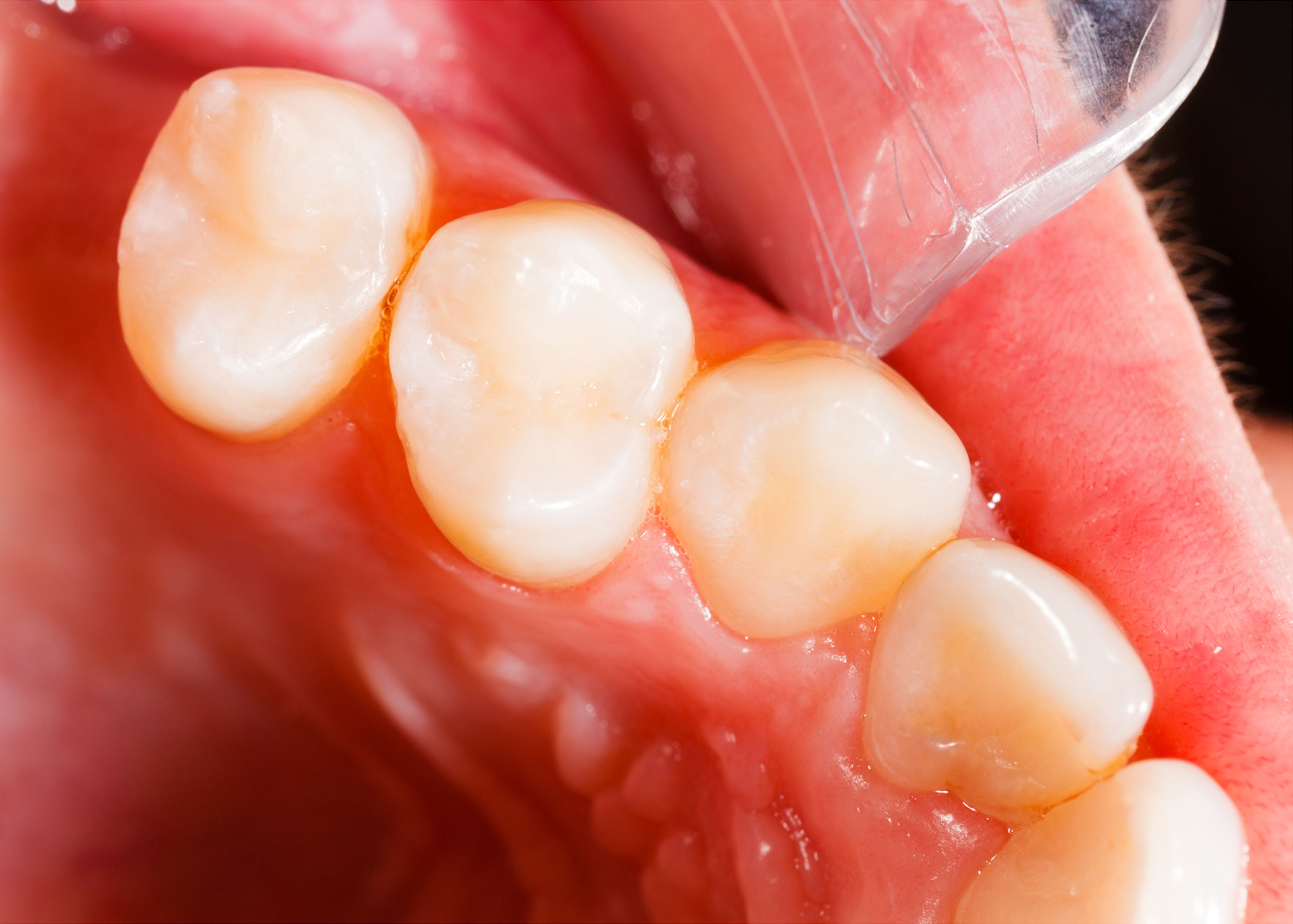Repair Damaged Teeth with Beautiful Tooth-Colored Fillings
Tooth-colored fillings can restore teeth damaged by cavities, avoiding the need for a root canal or tooth extraction and preventing periodontal disease. In our Albuquerque, NM, dental practice, Dr. James Slaman places tooth-colored fillings instead of silver amalgam fillings due to their superior durability, natural-looking aesthetics, and oral health benefits. This commonly performed restorative procedure can restore dental function without affecting the appearance of your smile.
When are Dental Fillings Necessary?
Cavity-causing bacteria thrive in plaque deposits that naturally form on the teeth. Proper routine hygiene is necessary to keep your teeth from harboring plaque and tartar. Patients who do not faithfully adhere to regular dental cleanings and appropriate at-home care are more susceptible to tooth decay.
Cavities can penetrate the tooth enamel, creating holes and compromising the structure of the tooth. By removing decay and placing a dental filling, Dr. Slaman can seal the tooth and protect against further infection and bacteria.

Tooth-Colored Fillings vs. Traditional Silver Fillings
Traditionally, silver amalgam fillings were used to treat cavities cause by decay. Though there are now more aesthetically-pleasing options on the market, amalgam fillings are still used today. This metallic material is comprised of a mixture of silver, zinc, tin, copper, and mercury. While metal fillings have been deemed safe in clinical studies, the presence of mercury is still a cause of concern for patients who may have a sensitivity to metal. Amalgam fillings, although strong and durable, tend to expand and contract with temperature changes, which can compromise the integrity of the tooth structure over time. Additionally, the metal amalgam fillings can seep through the filling and discolor the surrounding teeth.
Tooth-colored fillings are made from a high-quality composite resin material. This cosmetically-appealing alternative to amalgam has been prevalent in dentistry since the 1990s. Many patients choose to have their old silver metal fillings replaced with composite fillings. Not only can they be color-matched to your surrounding teeth, they are also biocompatible and completely metal-free. Unlike their amalgam counterparts, composite fillings do not fluctuate with temperature changes. Therefore, they successfully reinforce the tooth structure and are less susceptible to breakage or fractures.
This commonly performed procedure can restore dental function without affecting the appearance of your smile.
Receiving a Dental Filling
The placement of a dental filling is a routine and straightforward process that involves several steps:
- Diagnosis: In order to confirm the extent of decay, Dr. Slaman will perform a full examination to determine if a dental filling is your best treatment option. In addition to visually assessing the tooth, Dr. Slaman will also review x-rays of your teeth and gums. If the cavity extends too deep into the tooth structure, alternative options may be considered, such as an inlay, onlay, or dental crown.
- Anesthesia: Before beginning the procedure, Dr. Slaman will first numb your teeth and gums using local anesthesia to ensure you are comfortable throughout the treatment.
- Decay Removal: The damaged portions of the tooth structure will be carefully removed using special dental instruments.
- Preparation: Once the decay has been eradicated, a dental etch will be placed. This is an acidic solution that helps prepare the tooth surface for bonding.
- Filling: Your tooth will be rinsed and thoroughly dried. A composite resin material will be placed to fill the voids left behind by decay.
- Curing: A special dental light will be used to harden, or cure, the filling material.
- Shaping: Once the composite is cured, Dr. Slaman will shape the tooth, smooth out any rough edges, and check your bite for optimal function.
Schedule a Consultation with Us
If you are suffering from the symptoms of decay, such as a toothache or dental sensitivity, schedule an appointment with Dr. Slaman. You can contact us online anytime, or call our office at (505) 226-9364.






